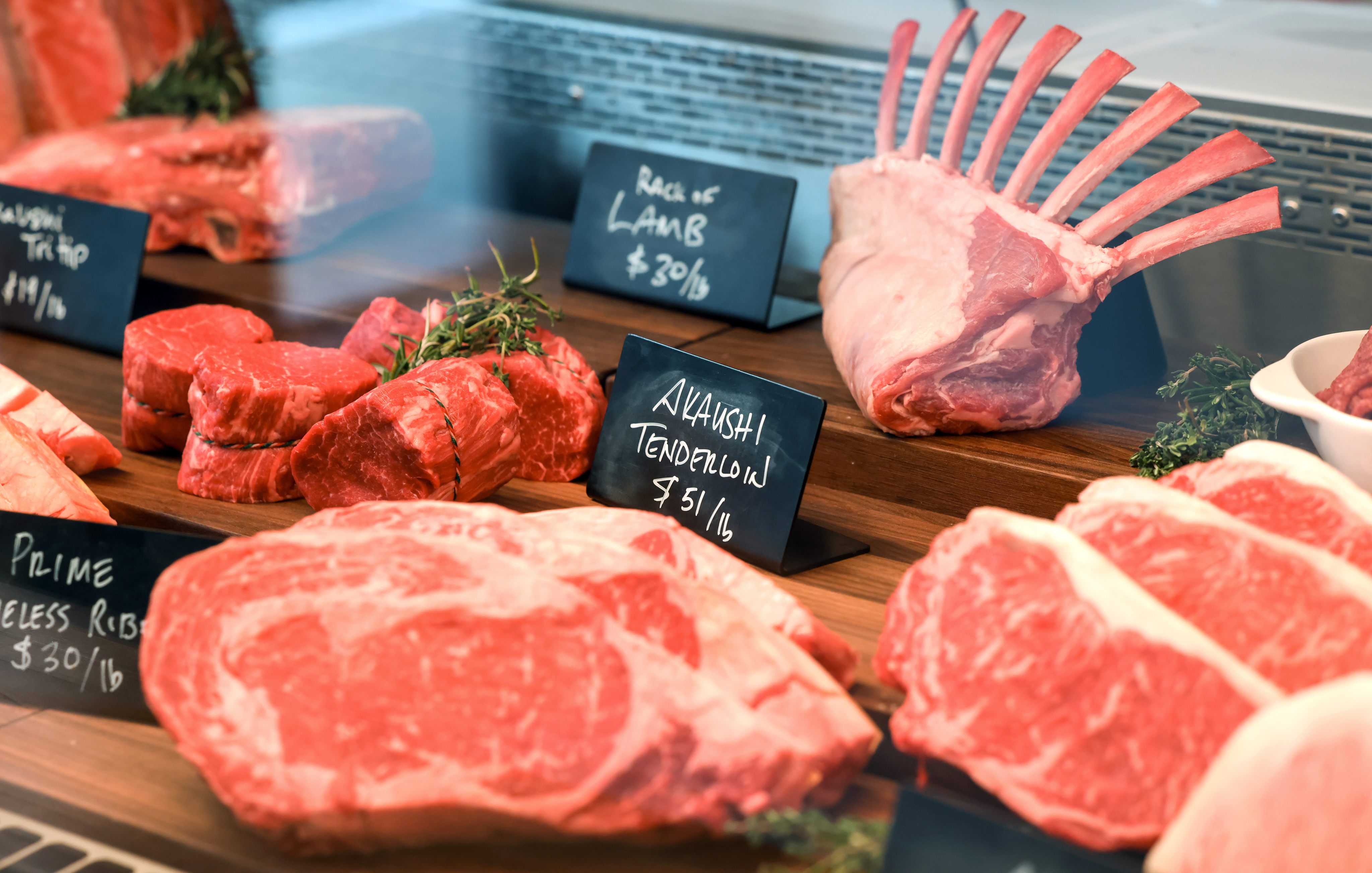Visit for quality meats at Bagley Meat Market Edwardsville IL for the best variety.
Visit for quality meats at Bagley Meat Market Edwardsville IL for the best variety.
Blog Article
How to Choose the Perfect Cut of Meat From a Trusted Meat Market
Choosing the optimal cut of meat from a relied on meat market needs a thoughtful technique that stabilizes top quality, culinary purpose, and spending plan. Understanding the various sorts of meat and their corresponding cuts is vital, as is engaging with your butcher to gain understandings right into sourcing and preparation. Observing characteristics such as color, appearance, and marbling can better lead your decision. As you think about these aspects, it becomes clear that the subtleties of your selection can substantially influence the end result of your dish, prompting a much deeper expedition of the requirements that genuinely matter.
Recognizing Meat Cuts


As an example, the tenderloin is treasured for its buttery structure and minimal connective cells, making it ideal for quick food preparation methods such as barbecuing or pan-searing. On the other hand, tougher cuts like the brisket or shank take advantage of sluggish food preparation strategies to break down collagen, generating abundant and delicious outcomes.
Furthermore, the fat material of a cut plays a vital role in taste profile and dampness retention throughout cooking. Cuts with higher fat material, such as ribeye, use a more robust flavor, while leaner alternatives, like sirloin, might call for mindful preparation to stay clear of dry skin (bagley meat market edwardsville il). Understanding these nuances enables informed options that boost culinary developments, making certain that each dish showcases the ideal top qualities of the chosen meat
Aspects to Take Into Consideration
When choosing the perfect cut of meat, numerous important variables enter into play that can considerably impact the final recipe. Firstly, consider the sort of meat you desire-- beef, pork, lamb, or fowl-- as each deals one-of-a-kind flavors and appearances. The particular cut within that group is similarly important; as an example, ribeye supplies rich marbling, while tenderloin gives a lean, buttery texture.
Another aspect is the cooking method you intend to use. Cuts suitable for barbecuing, such as T-bones or sirloins, differ from those better fit for slow-moving cooking, like chuck roasts or shanks. In addition, freshness is extremely important; always select meat with a vivid color and company appearance, indicating top quality and appropriate handling.
Furthermore, take into consideration the source of the meat. A trusted meat market usually provides locally sourced, hormone-free, and grass-fed choices, which can improve taste and nutritional value. Your spending plan will certainly assist your selection. Costs cuts might use extraordinary taste, yet there are also cost-efficient alternatives that, when prepared properly, can yield tasty results. Stabilizing these elements will certainly aid you pick the ideal cut for your cooking demands.
Concerns to Ask Your Butcher
A butcher's knowledge can be invaluable when selecting the optimal cut of meat for your cooking ventures. Begin by asking regarding the source of the meat.
Next, ask about the different cuts readily available for the kind of meat you like. An experienced butcher will certainly explain the nuances of each cut, assisting you pick one that matches your cooking approach and desired end result. check my reference Don't hesitate to ask about the most effective food preparation techniques for a certain cut; butchers frequently have ideas that can enhance your recipe.
It's also prudent to ask regarding the meat's freshness. A good butcher will be excited to share their expertise and suggest cuts that will certainly thrill your taste. Involving your butcher with these concerns can considerably boost your meat choice experience.
Identifying Quality Meat

Appearance is an additional critical aspect; quality meat ought to really feel strong and slightly resilient to the touch. Prevent any type of cuts that feel slimed or exceedingly dry, as these can show perishing or improper storage space. Additionally, scent plays an important duty; fresh meat needs to have a clean, neutral fragrance, while any repulsive or sour smells are red flags.
Lastly, take into consideration the resource. Getting from a trusted meat market, where the meat's a knockout post origin is known, can make sure greater quality standards. By concentrating on these indications-- shade, marbling, texture, scent, and source-- you can with confidence choose cuts that will raise your food preparation and dining experience.
Food Preparation Approaches for every Cut
Picking the right cooking technique is critical for making best use of the taste and tenderness of each cut of meat. Different cuts have distinct qualities that dictate one of the most ideal cooking techniques.
For tender cuts, such as filet mignon or ribeye, completely dry heat approaches like barbecuing, broiling, or pan-searing are perfect. These strategies improve the all-natural flavors while making certain a juicy, delicious appearance. On the other hand, harder cuts, such as chuck or brisket, gain from moist warmth methods, consisting of braising or sluggish cooking. These approaches help damage down connective cells, resulting in a tender, flavorful meal.
Pork chops and hen breasts are flexible and can be prepared using both dry and damp techniques. While grilling or roasting can generate scrumptious results, poaching or sautéing can keep moisture and inflammation. For lamb, methods like toasting or braising are suggested, as they enhance the meat's durable this hyperlink flavor.

Final Thought
In final thought, choosing the optimal cut of meat from a respectable meat market requires a comprehensive understanding of meat cuts and consideration of various elements, consisting of source, top quality, and cooking approaches. Involving with the butcher with targeted queries can yield valuable understandings and recommendations tailored to specific culinary needs. Prioritizing both top quality and budget plan will boost the overall gastronomic experience, guaranteeing that the chosen cut meets expectations in both flavor and prep work.
Report this page